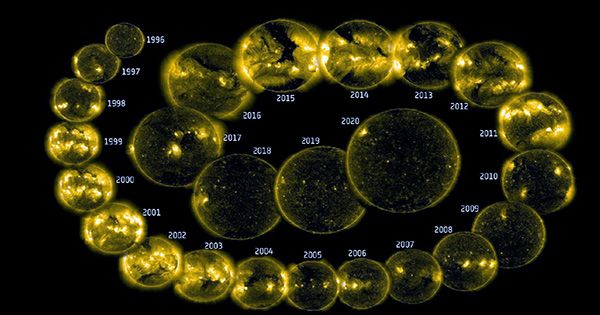In 1995, the Galileo mission’s entry probe burst into the atmosphere of Jupiter in a blazing fashion. The probe transmitted information regarding the burning of its heat shield that was different from the outcomes predicted by fluid dynamics models as it plummeted from Mach 50 to Mach 1 and generated enough heat to initiate plasma reactions on its surface.
Recent research investigates the potential causes of such a disparity. Using information provided during Galileo’s 30-second entrance, scientists from the Universidade de Lisboa and the University of Illinois at Urbana-Champaign describe the results of new fluid radiative dynamics models.
The paper, published in Physics of Fluids, from AIP Publishing, employs new computational techniques developed in the nearly 25 years since the mission.
“Early simulations for the probe design were conducted in the 1980s,” said Mario Lino da Silva, an author on the paper. “There are some things we can do in 2019, because we have the computational power, new devices, new theories, and new data.”
Galileo’s probe was one of the fastest human-made things ever when it entered Jupiter’s gravity at a speed of 47.4 kilometers per second. The carbon phenolic heat shield was heated to temperatures hotter than the surface of the sun by the fireball that was produced by the descent.
The built-in heat shield engineering margins actually saved the spacecraft. Early simulations for the probe design were conducted in the 1980s. There are some things we can do in 2019, because we have the computational power, new devices, new theories and new data.
Mario Lino da Silva
The probe’s data showed that, as measured by something called the recession rate, the rim of the heat shield burnt far more than even current models would have predicted.
“The fireball is a kind of soup where a lot of things happen at the same time,” he said. “One problem with modeling is that there are many sources of uncertainty and only one observed parameter, the heat shield recession rate.”
Recalculating properties of the mixture of hydrogen and helium that the probe passed through, such as viscosity, thermal conductivity, and mass diffusion, the team discovered that the frequently cited Wilke/Blottner/Eucken transport model was insufficient to capture interactions between hydrogen and helium molecules.

“The built-in heat shield engineering margins actually saved the spacecraft,” Lino da Silva said.
They discovered that the increased heating the probe’s heat shield encountered was largely caused by the hydrogen molecules’ radiative heating capabilities.
Lino da Silva expects that his work will assist advance the design of future spacecraft, particularly prospective missions to study Neptune, which won’t likely be completed until after he retires.
“In a way, it’s like building cathedrals or the pyramids,” he said. “You don’t get to see the work when it’s finished.”
Lino da Silva next looks to validate some of the simulated findings by reproducing similar conditions in a shock-tube facility tailored for reproducing high-speed flows.
















